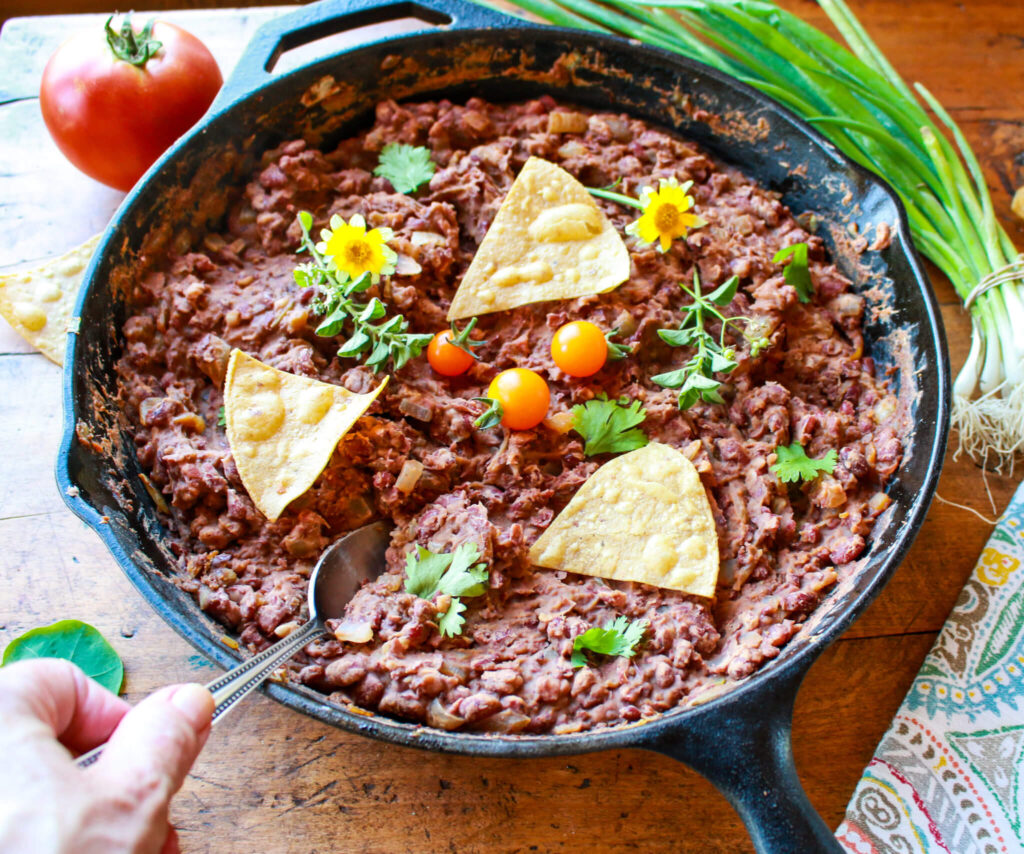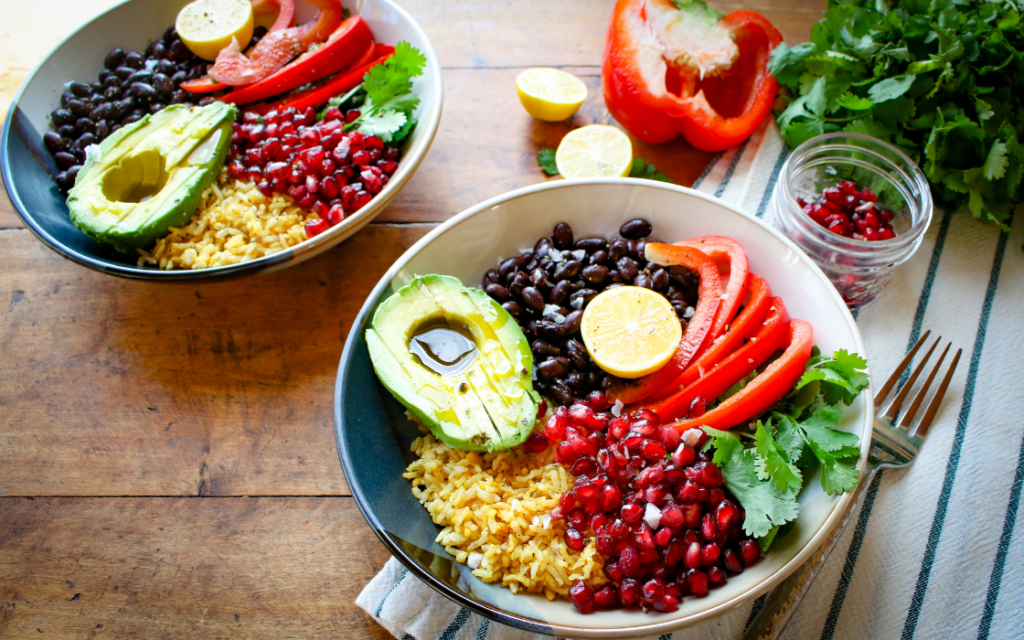Hacks: Top 5 Plant Protein Sources

There is a whole world of delicious, healthy plant-based eating just waiting to be discovered, so dive in with my hacks for the top 5 plant protein sources plus plant protein recipes.
It seems that everyone is interested in eating more plant-based meals these days, no matter what their eating style. Indeed, a recent survey found that almost three-fourths of people in the US know they should be eating more plant proteins over animal proteins. The many reasons people cite for eating more plant proteins is health, environment, and ethical reasons. Indeed, swapping out more animal proteins for plant proteins is a good habit to lower your carbon footprint, reduce your risks of chronic diseases, and lower impacts on animals in agriculture. And the very first step to moving towards a plant-based diet is to turn the plate from animal proteins to plant proteins at more meals each week. No matter what your eating style—omnivore (you eat everything), flexitarian (you eat almost vegetarian), vegetarian (no animal flesh), or vegan (you eat no animal products), you can make a shift to more meals featuring plant proteins each week. That means swapping standard menu options like steak, baked chicken, and bacon to dishes like red beans and rice, curried lentils, and veggie burgers. But don’t worry, making those little swaps is so much easier (and delicious) than you think! There is a whole world of delicious, healthy plant-based eating just waiting to be discovered. Get ready to dive in with my easy tips and hacks for the top 5 plant protein sources plus plant protein recipes to get you started.

Hacks: Top Five Plant Protein Sources

1. Get Beany With It
I suggest basing at least one of your plant-based meals each day on the humble, protein-rich plant food beans (also including lentils and dried peas). After all, this nutrient powerhouse (aka pulses) is the cornerstone of traditional diets around the world, from chickpeas in the Middle East to black beans in Mexico. In addition, beans are rich in fiber, vitamins, minerals and phytochemicals. No wonder eating more pulses is linked with numerous health benefits. Learn more about the health benefits of pulses here. So, take the meat off your plate, and substitute it for beans, lentils, or dried peas more often. Try these classic bean hacks for starters:
- Pack a whole grain burrito with refried beans and veggies.
- Fill a sandwich with hummus and roasted vegetables.
- Feast on home-made or canned vegetarian chili.
- Toss pasta with white beans, garlic, olive oil, and spinach.
- Simmer lentils with curry to serve with brown rice.
- Make a hearty split pea soup.
- Top your salad with kidney beans for lunch.

2. Become Acquainted with Tofu
Once you’ve mastered the first step, it’s time to turn to tofu as a wonderful plant-based superstar for your dinner plate. This simple, soy food can take the place of meat in just about anything, from pasta to wraps to a hearty salad. Start experimenting with tofu by dicing it into a flavorful dish, such as stir-fry or curried vegetables. Then you can gradually try a few other swaps, such as grated tofu with turmeric in your morning scramble or chunks of tofu in your ratatouille recipe. Remember, tofu is a blank canvas, it absorbs the flavors of the foods it is served with, so make sure to serve it with dishes that are heavy on flavor, such as Asian-inspired, Italian, or Indian-style marinades or sauces. Learn more about tofu in this guide here.

3. Go a Little Nuts
Another easy plant-protein hack is to turn to nuts, peanuts, and seeds for a punch of protein. One easy classic is the good old-fashioned PB and J—peanut butter is very rich in protein and can easily take the place of a deli meat in your sandwich. But you can also think beyond peanut butter to a range of nuts and seeds and their butters, including pistachios, almonds, walnuts, cashews, sunflower seeds, chia seeds, hemp seeds, and pumpkin seeds. One ounce (or about ¼ cup) of nuts and seeds or 2 tablespoons of nut or seed butters is the equivalent of an ounce of meat. Enjoy nuts and seeds on top of salads, stirred into pasta dishes or grain pilafs, or ground into home-made veggie burgers. Use nut or seed butters as a topping on toast, bread, flatbread, crackers, and fruit slices. Learn more about nuts and seeds here, and nut and seed butters here.

4. Power Up with Plant-Based Dairy Alternatives
One easy swap you can make is to trade animal-based dairy products—milk, yogurt, cheese, cream cheese—with plant-based varieties. Great tasting, easy-to-use options await you in the supermarket. Find a plant-based milk alternative that offers a clean, bright taste, and high-quality nutritional value. I suggest you look for those that provide at least 6 grams of protein per serving, and about 30% of your daily vitamin D and calcium needs. Try plant-based yogurt and cheese products that provide a good source of protein, too. Learn more about the best plant-based milks and yogurts in my helpful guides.

5. Go With What You Know
The easiest way to kick into a plant-based lifestyle is to make easy, straight-forward switches for your favorite foods. For example, do you love burgers? Then head to the supermarket and try out a few veggie, or “meatless” burgers until you find one that you really love. I enjoy making my own flavorful veggie burgers made with whole ingredients, such as beans, lentils, grains and vegetables. But it’s ok to find a few favorites in your market to make cooking on busy days easy. You’ll find a variety of products, including plant-based sausages, deli meats, canned chili, frozen pizza and burritos, and much more. Keep your eye on the nutrition facts label, looking for at least 7 grams of protein per serving.

Plant Protein Recipes
Try these delicious recipes for main dishes rich in these top five plant protein sources to make your plant-based eating even easier.
- Vegan Quiche with Asparagus and Dill
- Black Bean Spinach Enchiladas with Green Enchilada Sauce
- Easy Udon Noodle Bowl with Kimchi
- Vegan Tacos with Jackfruit, Black Beans, and Quinoa
- Easy Vegan Bibimbap Skillet
- One Pot Vegan Orecchiette Pasta with Sausage and Broccoli
- Nourish Lentil Bowl
- Vegan Chana Masala
- Vegan Chicken and Dumplings
- Vegan Pot Pie with Sage, Lentils, and Mushrooms

Learn More about Plant Proteins
- Combining a Grain with a Plant Protein for High Quality Meals
- How to Get Plant Protein
- Plant Protein Quality
- Power Up on the Plant Protein Star Pulses
Image: BEST Vegetarian Refried Beans, Sharon Palmer, MSFS, RDN
As an Amazon Influencer, I earn from qualifying purchases. For more information about affiliate links, click here.





When it comes to maintaining a more plant-based diet, these are some good tips to keep in mind. Sticking with what you know, in terms of plant-based foods, is a good place to begin.